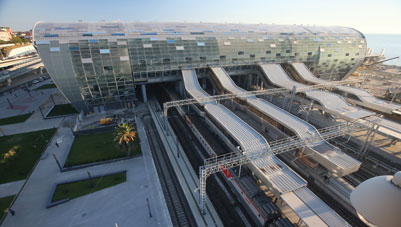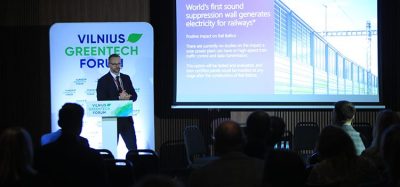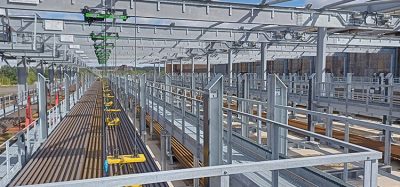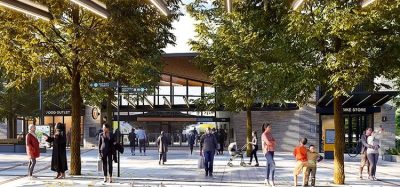Russian Railways’ infrastructure ready to serve Sochi 2014 Winter Olympics
Posted: 12 February 2014 | | No comments yet
In February 2014, the Russian city of Sochi on the Black Sea will host the Winter Olympic Games followed by the Paralympic Games in March 2014. Over the past few years the city has been completely transformed with new sporting facilities, housing and transportation interchanges being constructed. Russian Railways, one of the largest companies in the country, could not ignore this main sporting event and we have contributed to the infrastructure of Sochi to help support the 2014 Winter Olympic Games.


The combined rail and road built by Russian Railways will be an essential infrastructure asset during the Sochi 2014 Winter Olympics
Participants and guests attending previous large-scale events across the world have made it clear that they have had to spend a lot of time travelling from one stadium to another. Visitors to the Winter Olympics in Sochi will not be faced with this problem as the ice rinks on the coast are just a 30 minute journey away from the ski slopes. This quick journey time has been made possible thanks to the construction of a new ‘combined road’ built by Russian Railways.
The ‘combined road’
The ‘combined road’ is a railway and motorhighway placed next to each other that connects Adler on the coast with Krasnaya Polyana in the mountains, and was perhaps the most complicated in terms of implementing our project in Sochi. It includes 130km of road in the mountains and the coastal zone, plus two mountain stations with passenger terminals (Olympic Village and Krasnaya Polyana) which will function as transfer units for trucks and cableways, and it also includes six tunnel complexes with a total length of 25.5km, 37 railway bridges and 41 automobile bridges.
It was all built in the shortest time possible. The Russian Government set a five-year deadline for the completion of all objects. In accordance with the Town Planning Code of the Russian Federation, a regular term project of this scale is eight years, including three years for survey and design and five years for construction. So we were working with a three-year deficit – but we were up to the task.
In comparison: in 1967 it was decided to update the Baikal–Amur mainline. By the end of 1984, 29km of railway tunnels were planned to be built, but due to the suspension of funding during the period of political and economic transformation of the state, the last and longest tunnel (Severomuyskiy) was finally put into use in 2003.
Construction of the ‘combined road’ was carried out under difficult geotechnical conditions – we had to perform a significant amount of work to prevent avalanches, landslides, and mudflows. Tunnelling also prevented fractures in the karstic rock mass. Nine karstic areas had to be passed through during the construction of just one complex of tunnels for it to be completed.
According to the experts from Amberg Engineering Ltd., the technical and design solutions used in the ‘combined road’ tunnel construction have no analogues in tunnelling anywhere in the world. In December 2011 in Hong Kong, the ‘combined road’ tunnel project was voted ‘Best Project’ at the annual International Tunnelling Awards in the category of Major Tunnel Projects.
Today, modern comfortable Lastochka electric trains are in operation on the ‘combined road’ and it is also open to cars.
Environmental consideration
Any construction affects nature, especially a project as large as the ‘combined road’. Therefore, in the design and the implementation of the project, we worked to minimise the impact on the environment. In environmentally-sensitive areas we did not pave the ground, instead cutting tunnels or erecting overpasses. Forest-management plans were developed for all forest areas and more than 160,000 rare plant species were planted during construction. Compensatory measures were also spent on reproducing aquatic biological resources – in particular we released salmon into the Black Sea. In addition, we strengthened the shore and took measures against landslides and for the collection and treatment of wastewater.
Airport connection
The ‘combined road’ is not the only construction we built in the Sochi region. A new rail line connecting Adler with Sochi Airport almost 3km-long was built in a dense urban area which also crosses a hill. We therefore had to build tunnels, culverts and a bridge over the Bol’shaya Herota River.
We began regular passenger rail services between the airport and the centre of Sochi in February 2012. Its benefits have already been felt by residents and guests of the city. It is estimated that during the Winter Olympic Games, this line will provide 60% of all transportation for passengers at Sochi Airport.
Transporting goods
Strengthening of the Tuapse–Adler railway line and the laying of new tracks on the Sochi–Adler–Veseloe (Olympic Park) route were also made to not only increase capacity, but to also be used for the delivery of goods/cargo for Olympic facilities.
Adler Station
For the convenience of passengers, we have built and put into operation new railway stations and stops on the coast, and one of the main stations is Adler Station which we opened in October 2013. Its construction was carried out in line with the global trend towards large intermodal passenger transport hubs: hubs where passengers can not only make a transfer or leave luggage, but also to benefit from a great range of additional services, from shopping to booking into an on-site hotel.
The station has an unusual design: one part of the building overlooks the city and the other faces the sea. Adler Station combines all forms of passenger transport: rail, road, air, and sea (along with the possibility of building berths) making it a truly intermodal terminal.
The station has seven large floors; the total area is approximately 30,000m2 with a carrying capacity of up to 15,000 people per hour. At night the new terminal can handle more than 50 pairs of long-distance trains and commuter trains.
The upper-level of the railway station has a recreational area and an atrium with a winter garden. During the construction of the station, all the latest technology was used, including that for energy conservation. Solar modules were mounted on the rooftop to provide electric power.
A barrier-free environment was created in all the new facilities for passengers with reduced mobility. In addition, passenger terminals at Dagomys, Sochi, Macesta, and Khosta railway stations are equipped with ramps, lifts, braille signs, special ticket offices, and restrooms for all types of passengers.
I can confidently say that our facilities in Sochi are ready for the athletes and guests of the 2014 Winter Olympics.
Biography
Between 1985 and 1991, Vladimir Yakunin was in the service of the Soviet diplomatic mission to the United Nations – first as the Second Secretary and then as the Mission’s First Secretary. He then became the Chairman of the Board of CJSC International Centre for Business Cooperation, Director of the North-Western District Inspection of the main accountability office of the President of the Russian Federation. In October 2000, Vladimir became Deputy Minister of Transport of the Russian Federation. Then, in February 2002, he was appointed the First Deputy of the Russian Minister of Railways, and in October 2003 he became the First Vice-President of Russian Railways. In June 2005 Vladimir was appointed President of Russian Railways and was elected Chairman of the UIC in 2012.







